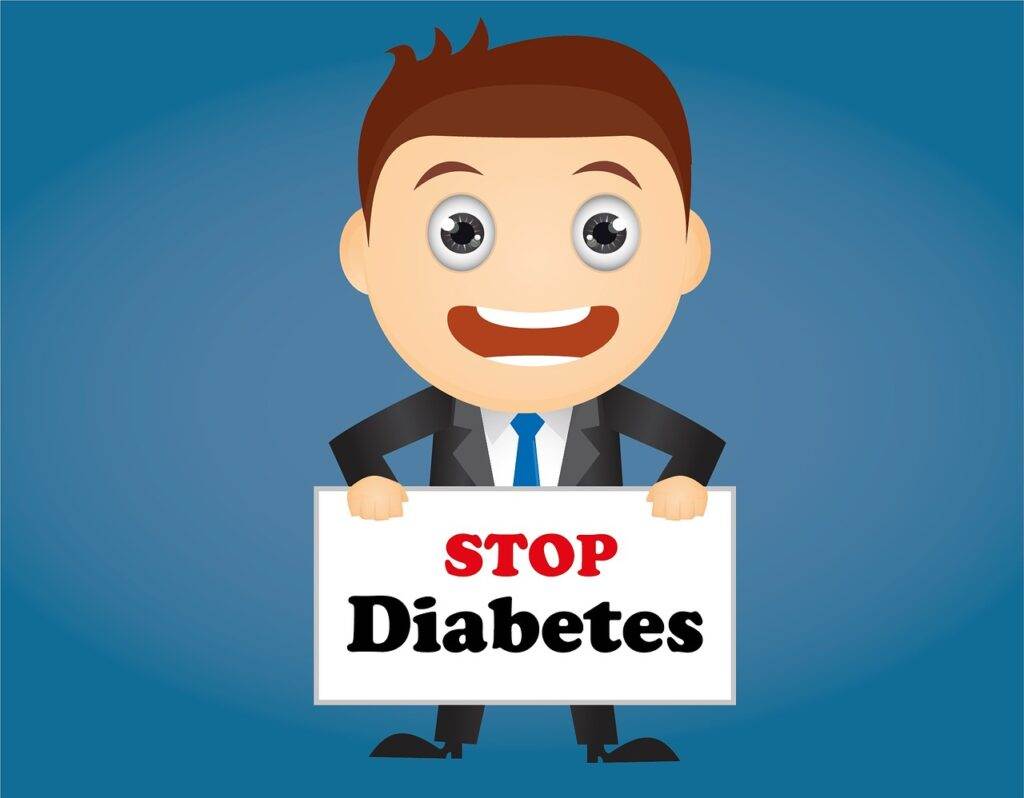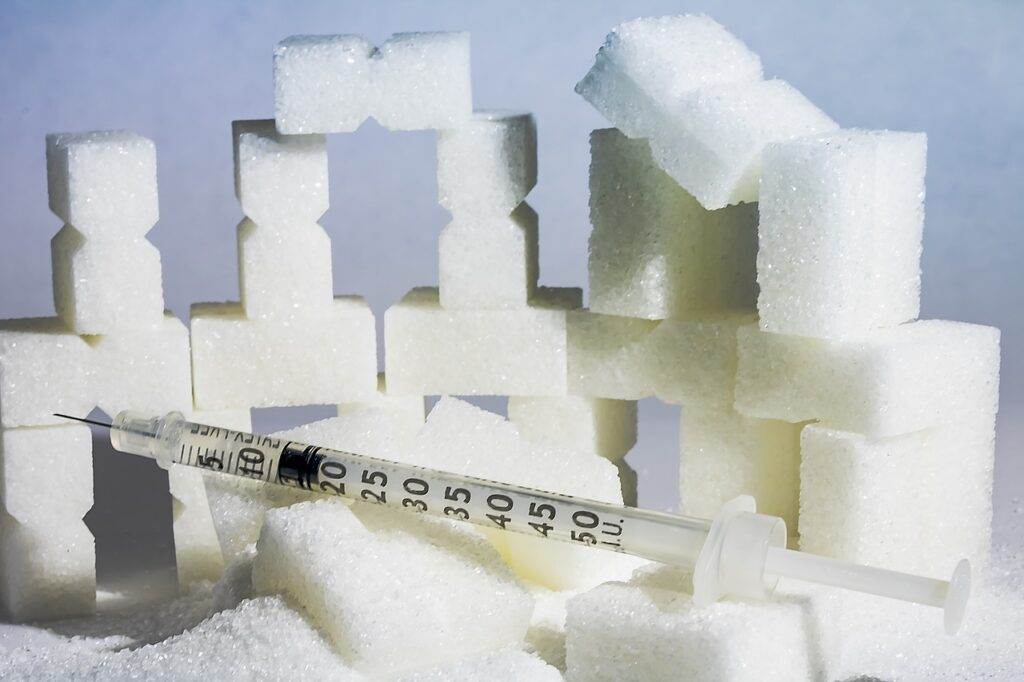Diabetes comes in two primary forms: Type 1 and Type 2. Sharing some common ground, these diabetes types exhibit distinct differences regarding causes, symptoms, and treatments. Dive into this article to better comprehend the intricacies of each condition and their effects on the body.
Table of Contents
A Comprehensive Overview of Type 1 and Type 2 Diabetes
Type 1 Diabetes
Type 1 diabetes, also known as juvenile diabetes or insulin-dependent diabetes, is an autoimmune disorder. In people with Type 1 diabetes, their immune system mistakenly attacks and destroys the insulin-producing beta cells in the pancreas. As a result, the body is unable to produce insulin, a hormone required to regulate blood sugar levels. Type 1 diabetes usually develops in childhood or adolescence, but it can also occur later in life.
Type 2 Diabetes
Type 2 diabetes, also called adult-onset or non-insulin-dependent diabetes, is a metabolic disorder. It is characterized by insulin resistance, which means the body’s cells do not respond effectively to insulin. In the early stages, the pancreas can still produce insulin, but as the disease progresses, insulin production may decrease. Type 2 diabetes is more common than Type 1 and typically develops in adulthood, although it can also occur in children and adolescents.
Diabetes Prevalence and Geographic Distribution
Type 1 and Type 2 diabetes exhibit marked differences in prevalence and geographic distribution. While Type 1 diabetes is a relatively rare form of diabetes, accounting for only 5-10% of diabetes cases globally, Type 2 diabetes is vastly more common, making up approximately 90-95% of all diabetes cases worldwide.
Variations in Incidence Rates
Type 1 diabetes shows variations in occurrence within certain geographic regions and ethnic groups. For instance, in the United States, non-Hispanic white individuals exhibit the highest incidence of Type 1 diabetes, followed by Hispanic individuals and non-Hispanic Black individuals.
In contrast, Type 2 diabetes has a higher prevalence in specific areas of the world, such as the Western Pacific and Southeast Asia regions, as well as the Middle East and North Africa.
Trends in Diabetes Prevalence
The number of diabetes cases worldwide is rapidly increasing, and Type 2 diabetes is experiencing a more significant surge than Type 1 diabetes. This rise in Type 2 diabetes is mainly due to unhealthy eating habits, a sedentary lifestyle, and obesity. In contrast, the exact causes of Type 1 diabetes remain unknown.
It’s essential to emphasize that both types of diabetes are becoming a major health concern globally, and this trend is expected to continue1International Diabetes Federation. IDF Diabetes Atlas. 9th ed. Brussels, Belgium: International Diabetes Federation; 2019. Available from: https://www.diabetesatlas.org/en/2Centers for Disease Control and Prevention. National Diabetes Statistics Report, 2020. Atlanta, GA: Centers for Disease Control and Prevention, US Department of Health and Human Services; 2020. Available from: https://www.cdc.gov/diabetes/pdfs/data/statistics/national-diabetes-statistics-report.Pdf.

Diagnosis of Type 1 and Type 2 Diabetes
Diagnosing diabetes
- Fasting Plasma Glucose (FPG) Test: measures the blood glucose level after an overnight fast. A result of 126 milligrams per deciliter (mg/dL) or higher indicates diabetes.
- Oral Glucose Tolerance Test (OGTT): measures the blood glucose level before and two hours after drinking a sugary drink. A result of 200 mg/dL or higher after two hours indicates diabetes.
- Hemoglobin A1C Test: measures the average blood glucose level over the past two to three months. A result of 6.5% or higher indicates diabetes.
- Random Plasma Glucose Test: measures the blood glucose level at a random time. A result of 200 mg/dL or higher, along with symptoms of diabetes, indicates diabetes.
- Urine Tests: can detect the presence of glucose and ketones in the urine. High levels of glucose and ketones indicate uncontrolled diabetes.
Differentiate between Type 1 and Type 2 diabetes
While these tests can determine if a person has diabetes, additional tests may be needed to differentiate between Type 1 and Type 2 diabetes, such as:
- C-Peptide Test: measures the level of C-peptide, a byproduct of insulin production, in the blood. Low levels of C-peptide indicate Type 1 diabetes, while high levels indicate Type 2 diabetes.
- Autoantibody Testing: This test checks for the presence of autoantibodies, which are markers of autoimmune attack on beta cells. Autoantibodies are typically found in Type 1 diabetes.
Symptoms of Type 1 and Type 2 Diabetes
Type 1 Diabetes Symptoms
Type 1 diabetes symptoms usually develop rapidly and may include:
- Frequent urination
- Excessive thirst
- Unexplained weight loss
Continue writing please
- Extreme hunger
- Fatigue
- Irritability and mood changes
- Blurred vision
Type 2 Diabetes Symptoms
Type 2 diabetes symptoms often develop slowly and can be subtle or even absent in the early stages. Some common symptoms include:
- Frequent urination
- Increased thirst
- Unexplained weight loss or gain
- Fatigue
- Slow-healing wounds
- Frequent infections
- Blurred vision
Causes of Type 1 and Type 2 Diabetes
Type 1 Diabetes Causes
The exact cause of Type 1 diabetes is still unknown, but it is believed to be a combination of genetic and environmental factors. Some of these factors include:
- Family history: Having a parent or sibling with Type 1 diabetes increases the risk.
- Genetics: Certain genes are associated with a higher risk of developing Type 1 diabetes.
- Viral infections: Some viruses, such as enteroviruses, may trigger the autoimmune response that destroys beta cells.
Type 2 Diabetes Causes
There are several risk factors associated with Type 2 diabetes, including:
- Family history: Having a family member with Type 2 diabetes increases the risk.
- Age: The risk of developing Type 2 diabetes increases with age.
- Obesity: Carrying excess body weight, especially around the waist, increases the risk.
- Physical inactivity: Leading a sedentary lifestyle contributes to insulin resistance.

Treatment for Type 1 and Type 2 Diabetes
Both Type 1 and Type 2 diabetes require a comprehensive management approach that may include lifestyle changes, medication, and regular monitoring.
Type 1 Diabetes Treatment
Insulin Injections
People with Type 1 diabetes have an insufficient production of insulin and must rely on external sources to manage their blood sugar levels. Insulin injections are a common treatment option for Type 1 diabetes. Short-acting and long-acting insulin are administered daily through injections.
Insulin Pumps
Insulin pumps are a device that is worn externally and continuously delivers insulin through a small tube inserted under the skin. This allows for a more precise delivery of insulin.
Continuous Glucose Monitoring (CGM)
A CGM is a sensor that tracks blood sugar levels in real-time, allowing for adjustments in insulin doses. CGMs can help people with Type 1 diabetes better manage their blood sugar levels.
Healthy Lifestyle
In addition to the above treatments, managing Type 1 diabetes involves maintaining a healthy lifestyle by monitoring blood sugar levels regularly, following a balanced diet, and engaging in regular physical activity.
Type 2 Diabetes Treatment
Healthy Lifestyle
The treatment for Type 2 diabetes mainly focuses on lifestyle changes. Lifestyle strategies for managing Type 2 diabetes include:
Healthy Diet
Following a balanced diet rich in fruits, vegetables, whole grains, and lean proteins is essential for managing Type 2 diabetes.
Physical Activity
Engaging in regular exercise to improve insulin sensitivity is also recommended for people with Type 2 diabetes.
Weight Loss
Losing weight through a combination of healthy eating and exercise if overweight or obese can help manage blood sugar levels in people with Type 2 diabetes.
Medications
Oral medications or injectable medications, such as GLP-1 receptor agonists, may be prescribed to help regulate blood sugar levels in people with Type 2 diabetes.
Insulin Therapy
In some cases, people with Type 2 diabetes may require insulin therapy if other treatments are not sufficient to regulate their blood sugar levels.
It is important to work closely with a healthcare professional to determine the most appropriate treatment plan for managing diabetes. Consistent monitoring of blood sugar levels, following a healthy lifestyle, and taking medications as prescribed are crucial for effective diabetes management.
Type 2 Diabetes Medications
There are several types of medications used to treat Type 2 diabetes, each with its unique mechanism of action, side effects, and benefits.
Metformin
Metformin is the most commonly prescribed medication for Type 2 diabetes. It works by reducing the amount of glucose produced by the liver and improving insulin sensitivity. Metformin is usually taken orally and can cause gastrointestinal side effects, such as nausea, vomiting, and diarrhea. In rare cases, it may also lead to lactic acidosis, a severe condition that can be life-threatening.
Sulfonylureas
Sulfonylureas are a class of medications that stimulate the pancreas to release more insulin. Examples of sulfonylureas include glimepiride, glyburide, and glipizide. They are usually taken orally and may cause side effects such as weight gain, low blood sugar (hypoglycemia), and skin rash.
DPP-4 Inhibitors
DPP-4 inhibitors are a class of medications that help regulate blood sugar levels by inhibiting the enzyme DPP-4, which breaks down incretin hormones that stimulate insulin secretion. Examples of DPP-4 inhibitors include sitagliptin, saxagliptin, and linagliptin. They are usually taken orally and may cause side effects such as upper respiratory tract infections, headache, and stomach upset.
GLP-1 Receptor Agonists
GLP-1 receptor agonists are a class of medications that mimic the effects of incretin hormones, which stimulate insulin secretion and suppress glucagon release. Examples of GLP-1 receptor agonists include exenatide, liraglutide, and dulaglutide. They are usually administered via injection and may cause side effects such as nausea, vomiting, and diarrhea.
SGLT-2 Inhibitors
SGLT-2 inhibitors are a class of medications that work by blocking the reabsorption of glucose in the kidneys, leading to increased urinary glucose excretion. Examples of SGLT-2 inhibitors include canagliflozin, dapagliflozin, and empagliflozin. They are usually taken orally and may cause side effects such as urinary tract infections, yeast infections, and hypotension.
Insulin
Insulin therapy may also be used to treat Type 2 diabetes if other medications and lifestyle changes are not sufficient to control blood sugar levels. Insulin is usually administered via injection and may cause side effects such as hypoglycemia, weight gain, and injection site reactions.
It is important to work closely with a healthcare professional to determine the most appropriate medication for managing Type 2 diabetes. Regular monitoring of blood sugar levels and side effects is crucial to ensure that the treatment is effective and safe.
different types of insulin available
Insulin is a hormone that regulates blood sugar levels.
- For people with Type 1 diabetes, their body doesn’t produce insulin, so they rely on external sources of insulin to control their blood sugar levels.
- People with Type 2 diabetes may also need insulin if their pancreas can’t produce enough or if other medications and lifestyle changes don’t work.
There are different types of insulin, classified based on their speed of action.
- Rapid-acting insulin: begins to work within 15 minutes after injection and reaches its peak effect in about 1 hour. Examples of rapid-acting insulin include insulin lispro, insulin aspart, and insulin glulisine.
- Short-acting insulin: begins to work within 30 minutes after injection and reaches its peak effect in about 2 to 3 hours. Examples of short-acting insulin include regular insulin.
- Intermediate-acting insulin: begins to work within 2 to 4 hours after injection and reaches its peak effect in about 4 to 12 hours. Examples of intermediate-acting insulin include NPH insulin.
- Long-acting insulin: begins to work within 1 to 2 hours after injection and has a relatively constant effect over 24 hours. Examples of long-acting insulin include insulin glargine and insulin detemir.
- Ultra-long-acting insulin: has an onset of action of 6 hours or more and lasts for up to 42 hours. Examples of ultra-long-acting insulin include insulin degludec.
Insulin can be given using a syringe, insulin pen, or insulin pump. The type and amount of insulin administered depend on factors such as the individual’s blood sugar levels, diet, and physical activity.
It is essential to work closely with a healthcare professional to determine the appropriate insulin type and dosage, and to monitor blood sugar levels regularly to ensure effective and safe treatment. Insulin therapy is life-saving, but it can also cause low or high blood sugar, so monitoring and adjustment are crucial.

Complications of Type 1 and Type 2 Diabetes
Both Type 1 and Type 2 diabetes can lead to serious complications if not managed properly. Some of the potential complications include:
- Heart disease
- Stroke
- Kidney damage (nephropathy)
- Eye damage (retinopathy)
- Nerve damage (neuropathy)
- Foot problems and amputation
Prevention of Type 1 and Type 2 Diabetes
There is no known way to prevent Type 1 diabetes. However, adopting a healthy lifestyle may help prevent or delay the onset of Type 2 diabetes. Some preventive measures include:
- Eating a balanced diet
- Exercising regularly
- Maintaining a healthy weight
- Limiting alcohol consumption
- Not smoking
Managing Diabetes and Living with the Condition
Strategies for Coping with Stress
Living with diabetes can be stressful, but managing stress is crucial for maintaining optimal blood sugar levels. Here are some effective strategies for coping with stress:
Practice Mindfulness
- Engage in mindfulness exercises, such as meditation or deep breathing techniques, to help calm the mind and stay present.
Prioritize Self-Care
- Allocate time for self-care activities, such as exercise, hobbies, and relaxation, to reduce stress and maintain a positive outlook.
Establish a Support Network
- Connect with friends, family, or support groups to share experiences, learn from others, and foster a sense of community.
Mental Health Support for Diabetes Management
Addressing mental health is an essential aspect of diabetes management. Here are some tips for maintaining mental well-being:
Recognize Signs of Distress
- Be aware of signs of emotional distress, such as persistent sadness, anxiety, or irritability, and seek help when needed.
Consult a Mental Health Professional
- Consider working with a therapist or counselor who specializes in diabetes-related mental health issues to help navigate the emotional challenges of living with the condition.
Set Realistic Goals
- Establish realistic and achievable goals for diabetes management, focusing on incremental progress rather than perfection.
Discovering Diabetes-Friendly Recipes
Eating well is essential for managing diabetes. Here are some resources and tips for finding diabetes-friendly recipes:
Consult a Dietitian
- Collaborate with a registered dietitian specializing in diabetes to create a personalized meal plan tailored to your needs and preferences.
Explore Online Resources
- Browse reputable websites and blogs focused on diabetes-friendly recipes, such as the American Diabetes Association or Diabetes Forecast.
Try Recipe Modification
- Modify favorite recipes by swapping out high-carb or high-sugar ingredients for healthier alternatives.
Tips for Everyday Diabetes Management
Incorporating healthy habits into your daily routine can significantly improve diabetes management. Here are some tips to help:
Monitor Blood Sugar Levels Regularly
- Keep track of blood sugar levels throughout the day to identify patterns and make adjustments as needed.
Stay Active
- Engage in regular physical activity to improve insulin sensitivity and promote overall health.
Prioritize Sleep
- Ensure adequate sleep each night, as sleep deprivation can negatively impact blood sugar levels and overall well-being.
Stay Informed
- Keep up-to-date with the latest diabetes research and management strategies to make informed decisions about your care.
In conclusion, managing diabetes and living well with the condition involves addressing stress, mental health, and nutrition, as well as maintaining healthy daily habits. By integrating these strategies and resources into your life, you can effectively manage diabetes and enjoy a fulfilling, active lifestyle.

Conclusion
Type 1 and Type 2 diabetes, while sharing some similarities, have distinct differences in causes, symptoms, and treatments. Understanding these differences is crucial for managing each condition effectively and reducing the risk of complications. By adopting a healthy lifestyle and working closely with healthcare professionals, people with diabetes can lead full and active lives.
FAQs
Q. What is the main difference between Type 1 and Type 2 diabetes?
The main difference between Type 1 and Type 2 diabetes is the underlying cause. Type 1 diabetes is an autoimmune disorder in which the body’s immune system attacks and destroys insulin-producing cells in the pancreas, while Type 2 diabetes is a metabolic disorder characterized by insulin resistance.
Q. Can Type 2 diabetes turn into Type 1 diabetes?
No, Type 2 diabetes cannot turn into Type 1 diabetes. They are separate conditions with distinct underlying causes. However, some people with Type 2 diabetes may eventually require insulin therapy if their pancreas can no longer produce sufficient insulin.
Q. Is one type of diabetes more severe than the other?
Both Type 1 and Type 2 diabetes can lead to serious complications if not properly managed. However, Type 1 diabetes usually requires more intensive management, as people with this condition must rely on external insulin sources to regulate their blood sugar levels.
Q. Can Type 1 diabetes be prevented?
There is currently no known way to prevent Type 1 diabetes, as its exact cause remains unclear. Research is ongoing to better understand the factors that contribute to the development of this condition and potential prevention strategies.
Q. Can diabetes be cured?
Currently, there is no cure for diabetes. However, with proper management, people with diabetes can lead healthy and active lives. Treatment options for diabetes include medication, lifestyle changes, and regular monitoring of blood sugar levels.
Q. What lifestyle changes can help manage Type 2 diabetes?
Lifestyle changes that can help manage Type 2 diabetes include adopting a healthy diet, engaging in regular physical activity, losing weight if overweight or obese, limiting alcohol consumption, and not smoking. In some cases, medication may also be prescribed to help regulate blood sugar levels.
Q. Can diabetes be managed without medication?
In some cases, lifestyle changes such as following a healthy diet and engaging in regular physical activity may be enough to manage diabetes without medication. However, in many cases, medication is necessary to regulate blood sugar levels and prevent long-term complications. It is important to work closely with a healthcare professional to determine the most appropriate treatment plan for managing diabetes.
This content is for informational purposes only and that readers should consult a healthcare professional for personalized advice.

